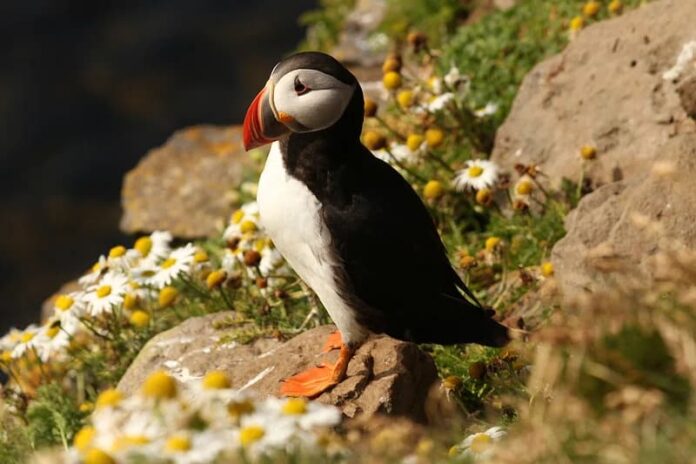Colorful tongues are not common in humans, and it is also quite rare in the animal kingdom. However, I managed to find and put together a list of 8 animals with colorful tongues for you here today. What you are about to see are the animals with tongues of different colors apart from pinkish red like ours. Feel free to take a look and see what they are with me below.
1Blue-Tongue Skink
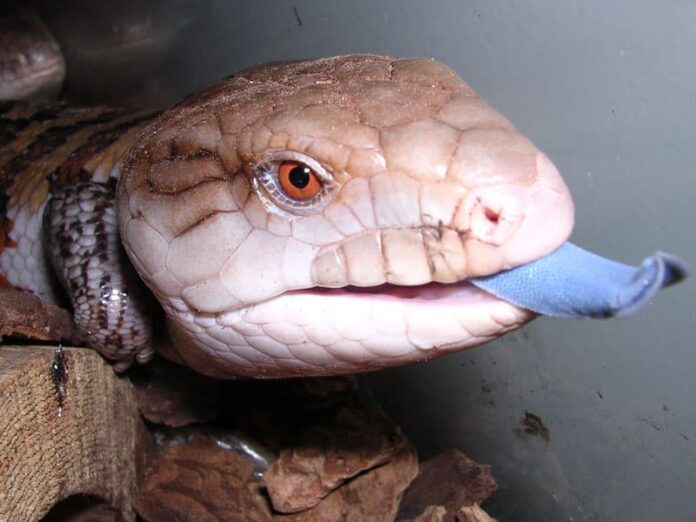
When bothered, a blue-tongue skink will puff itself up to look bigger and hiss to ward off the intruder. The colorful blue tongues of the blue-tongue skinks play an important part in their defense mechanism. When things get serious, this lizard will open its mouth as wide as possible and stick its tongue out. This method is very helpful, and it works most of the time to scare away some of the predators. Another interesting thing is that the back of their tongues is brighter than the front, and it is UV-intense. So when there are predators that can UV rays that attack at night, that tongue does help a lot.
2Chow Chow
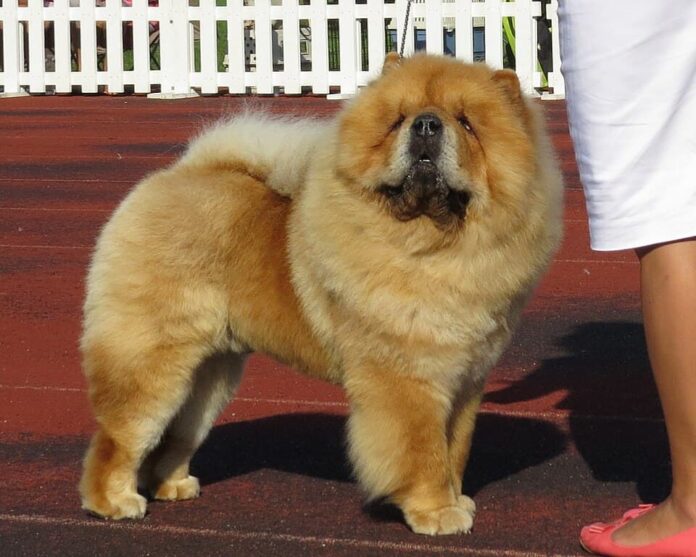
Adorable and fluffy, there are many more interesting things about Chow Chow than just the look. This lion-like doggo has a blue-black tongue that looks absolutely different from other dog breeds. Along with the tongues, they also have black edges on the lips with black gum which is quite similar to a lion’s lips. Only the fully bred Chow Chow have dark-colored tongues, the crossbreeds do not possess this look. The thing is that Chow Chows are not born with this blue-black tongue from birth.
Chow Chow puppies have punk tongues, and the color changes and develops when their eyes open. So what makes a pure breed Chow Chow has a blue tongue? Unlike some animals that use their colorful tongues for defending purposes, this dog breed has black tongues because of high pigmentation. The color becomes completely blue-black when the puppy is around 6 months old. When a Chow Chow gets old, it loses some pigmentation in its tongues which changes color to a pinkish color.
3Forest Gecko
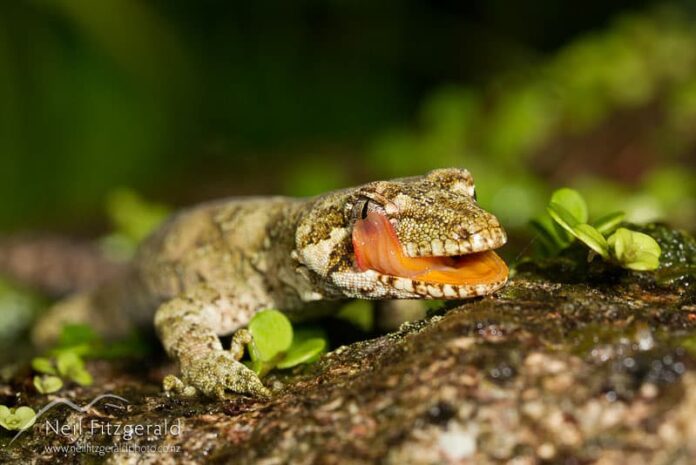
Apart from blue and black, what are the other colors that you expect from animals? A forest gecko has a bright orange tongue along with a bright orange or yellow mouth lining. The cool thing about the color of this species changes is that it changes with there are changes in pH. Just like other geckos, they don’t have eyelids so those colorful tongues are for cleaning their eyes and catching food. Forest geckos are endemic to New Zealand where they live on mainland and offshore islands. This species is at risk of declining, and they are being protected in conservative forests.
4Giant Leaf-Tailed Gecko
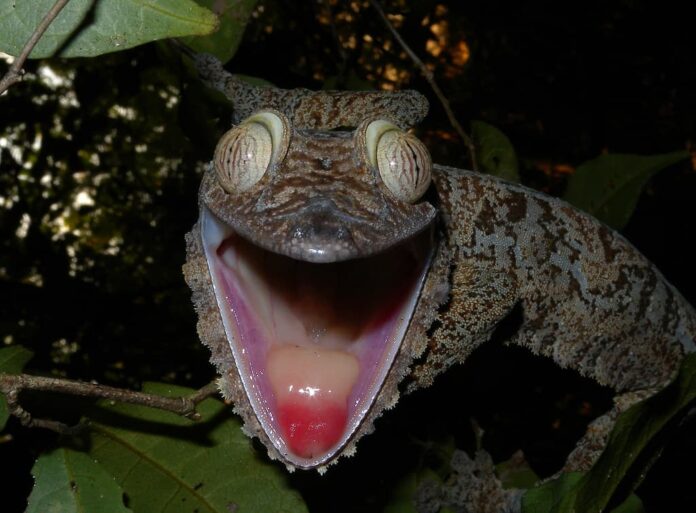
Looking similar to the forest geckos, this species lives in Madagascar where they are among the most amazing creatures. This species inhabits the humid and intact forests in the lowlands where they rest during the day and hunt at night. You can also find them in the rainforests in the eastern part of the Madagascar coast. Giant leaf-tailed geckos have bright red tongue that contrasts their body color, making it look very fascinating.
Just like the name suggests, this species is one of the big geckos in the world. They have large marbled eyes with red concentric striations around the pupil. If they don’t open their mouth, their color and flat body can blend and camouflage in the environment very well. Deforestation in Madagascar affects the habitats of the giant leaf-tailed geckos, and illegal collection for pet trade also plays a part in their population decline.
5Giraffe
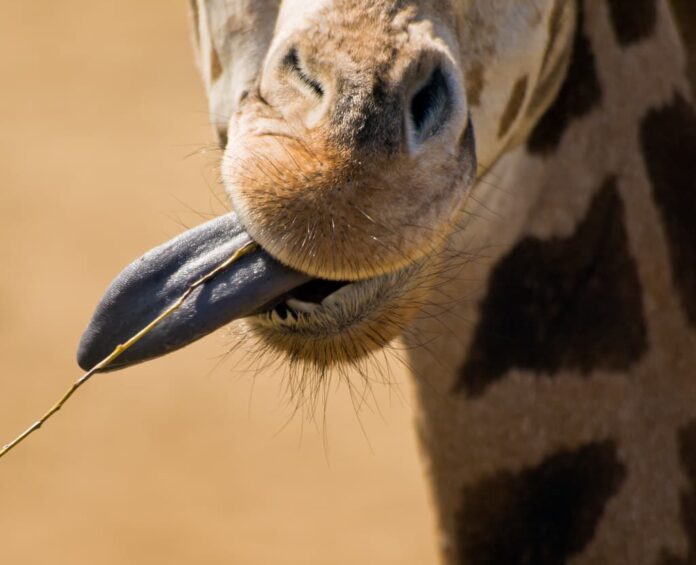
When it comes to tongues, giraffes are one of the animals that pop up in people’s minds. These long-neck animals have the longest prehensile tongues, and of course, the color is black. Their long tongues help them to feed on a range of different plants and shoots on top of their long necks. The color of giraffe’s tongues is not always black, some of them have dark blue or dark purple tongues. This dark coloration simply protects the tongue from frequent sun exposure while eating to prevent it from getting sunburned. However, only the front half of the tongue is dark in color while the back half is pink in color. Since their tongues are around 50 centimeters in length, we don’t usually see the brighter side of their tongues.
6Okapi
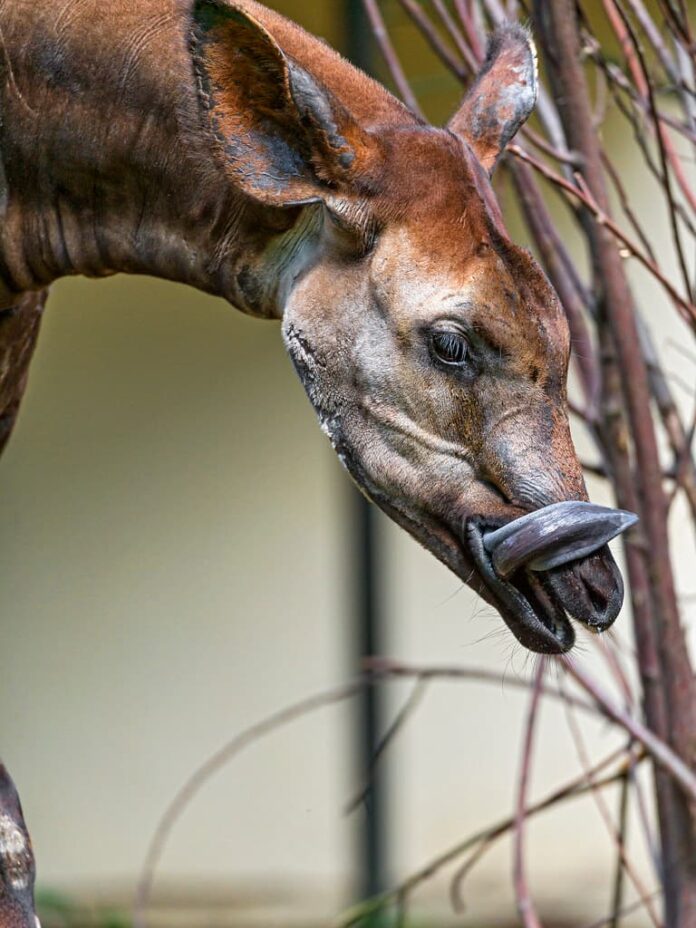
As the closest cousins of giraffes, okapis share the same prehensile tongues but at a shorter height. Their tongues are also long with either black or dark blue color that allows them to reach high vegetation. Besides using their tongues to eat, okapis also use their tongues to clean their ears and eyelids. That long tongue is also useful as an insect swatter from their withers. In contrast to giraffes that live in groups in open areas, okapis live solitarily in dense rainforests of Central Africa. As elusive animals, it is very rare to see them in their natural habitats. In case you want to see one, you can find okapis in the San Diego Zoo.
7Polar Bear
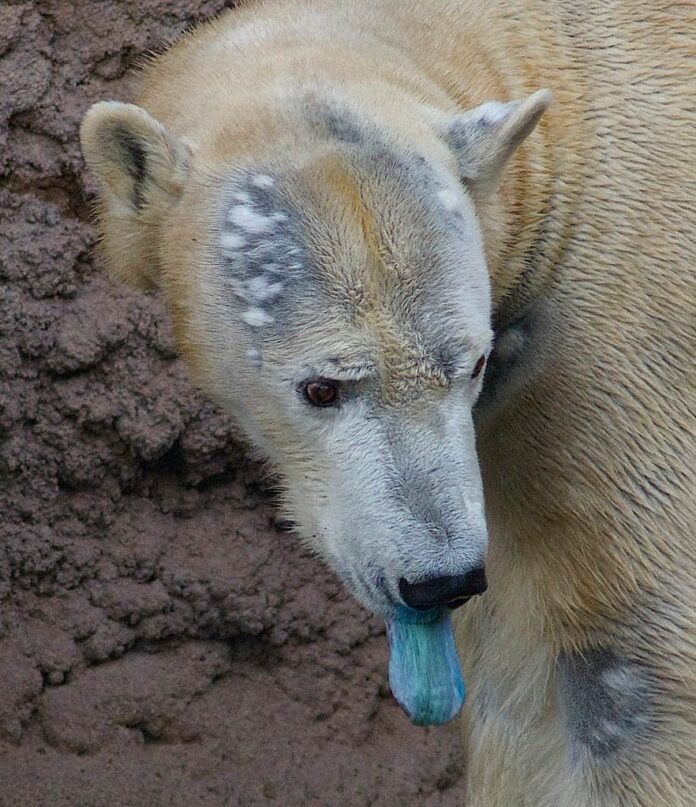
Gracefully white and almighty, polar bears actually have black skin underneath that fluffy fur. In fact, polar bears also have dark bluish tongues that absolutely stand out in their white body and snowy habitat. Not different from Chow Chows, baby polar bears have pink tongues when they are born. As the polar bears get older, their tongues start to turn black, dark blue, or dark purple. Another interesting thing about polar bears is that polar bears can also regulate their heat balance by panting like a dog. More than that, the black skin and tongue of polar bears might play a part in keeping them warm by absorbing heat. This could be a quirk, but this creature sure has a lot of impressive things to show us.
8Puffin
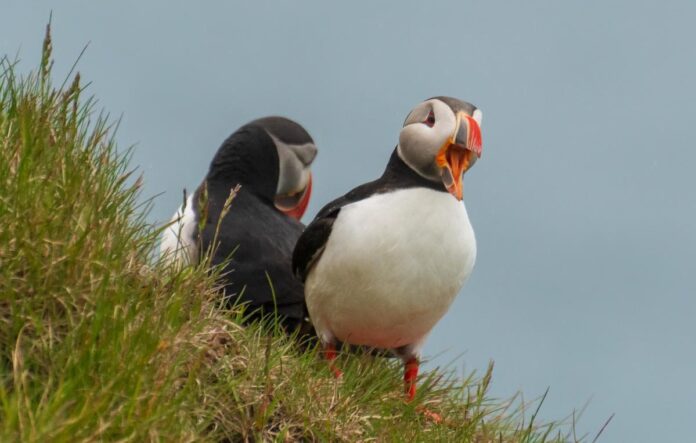
With adorable looks and flawless coloration, puffins are one of the animals with colorful tongues. You can never mistake a puffin for other animals due to their beautiful beaks and black and white bodies. Puffins have bright orange tongues and feet, and these sea parrots breed and live in and around Iceland. One of the coolest things about these seabirds is that their beaks change colors at different times of the year. During the breeding season and spring, their beaks are colorful as you see above. Just before winter starts, puffins shed the outer beak which leaves a smaller and duller-colored beak instead. Even more interesting, puffins dig and live in burrows instead of building nests like other birds. Since they are not good flyers, they look adorably clumsy when they land which is super cute.
Related Post: Carnivorous Lizards With Forked Tongues

